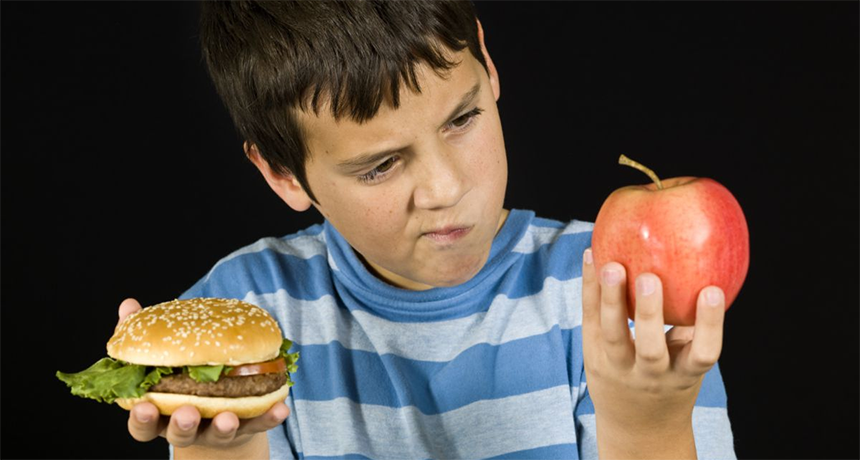Junk food junkies
Rats on a junk food diet behave like drug addicts

Eating lots of junk food may make it get harder to choose healthy food over time.
Juanmonino/iStockphoto
It sounds like a science experiment designed by Willy Wonka: Take a lot of junk food, feed it to some rats, and see what happens.
Scientist Paul Johnson of the Scripps Research Institute and his team did just that. But their science experiment was no fiction. They had a serious goal: to try to understand how parts of the brain play a role in obesity. (Obesity is the condition of being very overweight, which has been linked to a variety of health problems.)
The scientists observed that the more junk food the rats ate, the more they wanted to eat—a behavior very similar to that of rats addicted to heroin, a dangerous drug. Johnson told Science News the experiment shows that the brain chemistry of obesity and drug addiction may be quite similar.
In their experiment, Johnson and his team studied the “pleasure center” of rats’ brains. The pleasure center is a complicated network of nerve cells. Together, these cells work as the body’s reward system. If the animal exercises or eats, the cells reward the animal by releasing chemicals into the body that make it feel good. And when the body feels good, the animal—or person—will want to do the behavior again.
Pleasure centers can release these chemicals in less healthy ways, too. Drugs like heroin can cause the pleasurable chemicals to be released.
For the experiment, Johnson fed foods like cheesecake, bacon and Ho Hos to one group of rats. These foods are all high in calories and high in fat. Another group of rats received a regular, nutritious diet. The rats that ate junk food started to eat more and more.
“They’re taking in twice the amount of calories as the control rats,” says Paul Kenny, also at Scripps Research Institute. Kenny worked with Johnson on the study.
Kenny and Johnson wanted to know what was going on in the brains of rats that were overeating. To find out, they came up with a simple reward system. They first devised a way to deliver a small electrical charge to the rats’ brains. This electrical charge would stimulate the pleasure centers to release pleasure-causing chemicals. The rats could control how much stimulation—and how much pleasure—they received by running on a wheel. The more the rat ran, the more pleasure it received.
The rats that had been eating junk food started running more and more. This behavior suggested that the junk-food–eating rats needed more brain stimulation to feel good compared with rats on a normal diet. In other words, their pleasure centers were becoming less sensitive and the junk food didn’t make them feel good unless they ate more and more. The same process happens in the brains of drug addicts. As the pleasure center becomes numb, the addict has to consume more of the drug to feel good.
“They lose control,” Kenny says. “This is the hallmark of addiction.”
Kenny and Johnson also found out that the effects are hard to reverse. After they took away the junk food and offered the rats a nutritious diet, the fat rats refused to eat. “They starve themselves for two weeks afterward,” Kenny says.
Experiments like this one could help scientists understand how chemicals in the brain contribute to obesity. With that information, they may be able to help people avoid obesity—and all of its health problems—in the first place. Not bad for a bunch of rats with Ho Ho’s in their paws.







